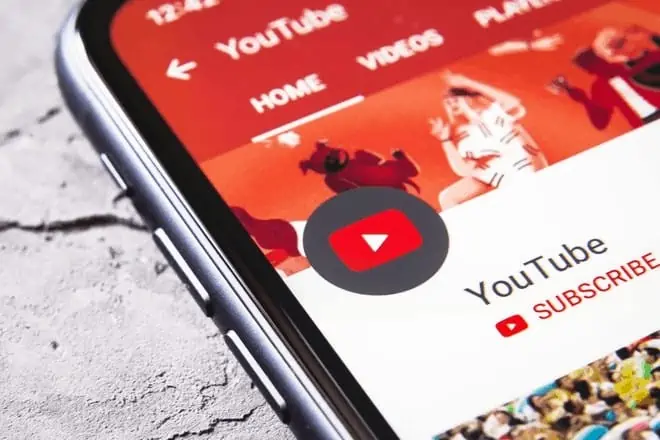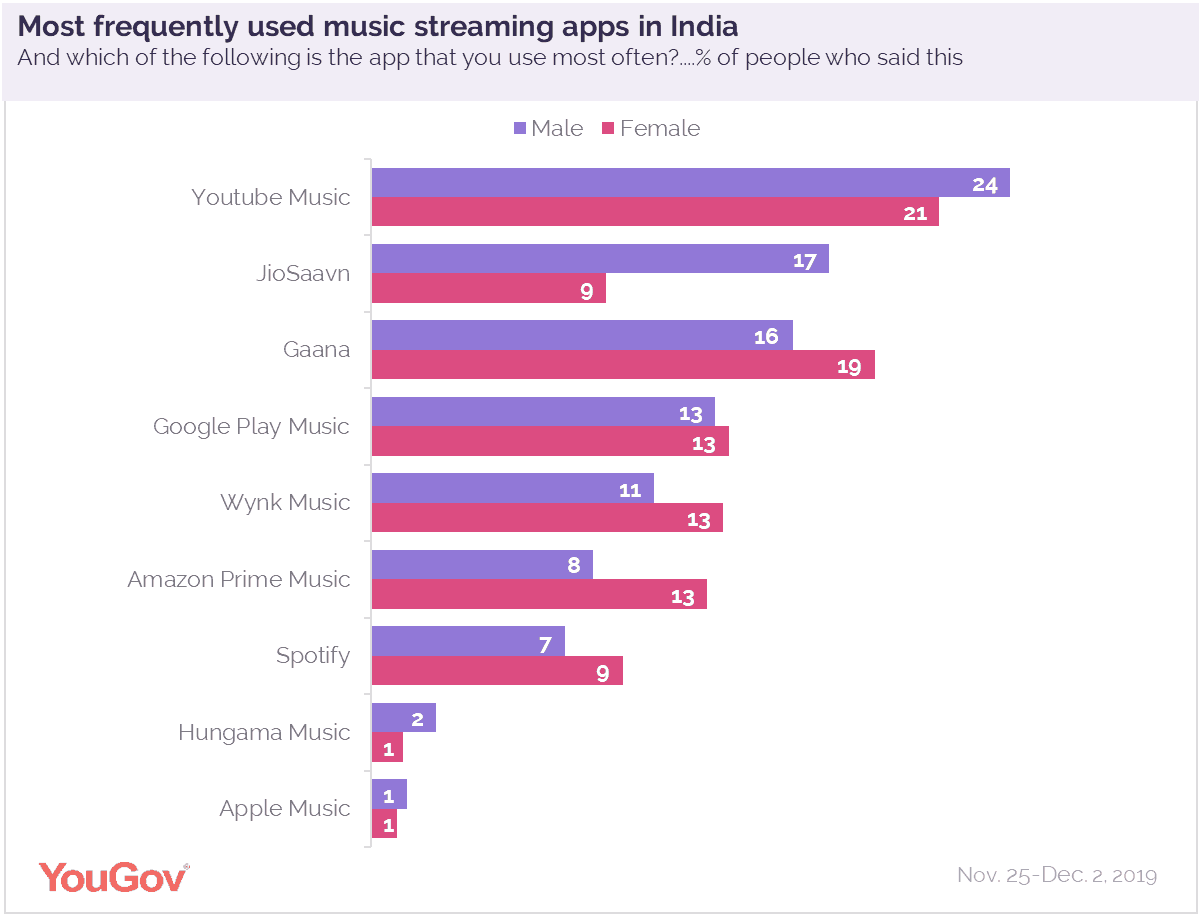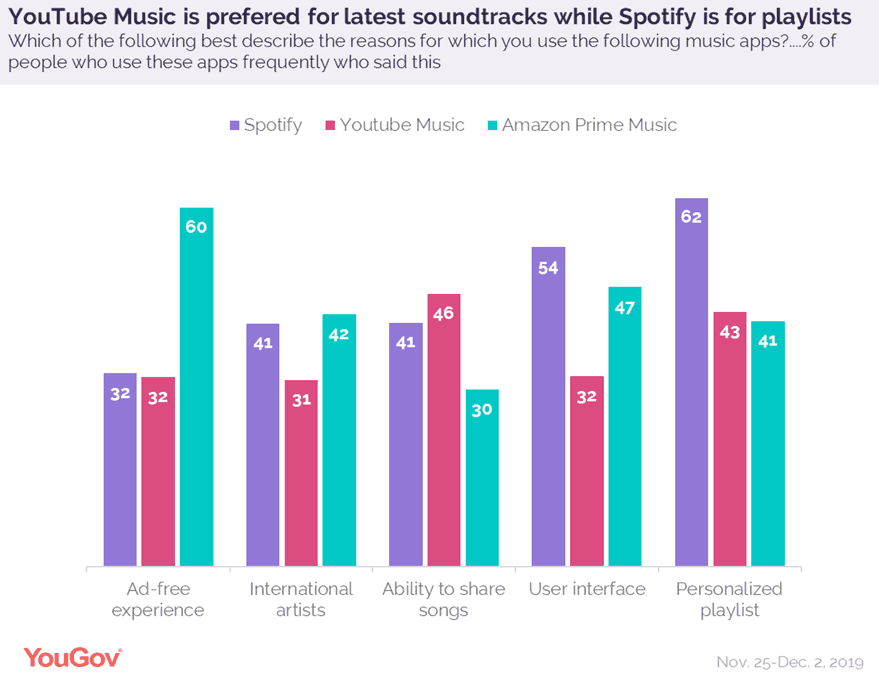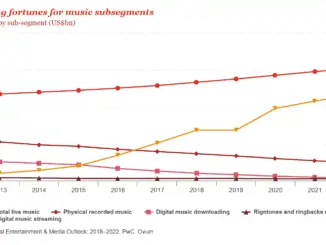
YouTube music app is the most frequently used in India according to a recent survey* by leading market research and data company, YouGov. The main reasons given for using YouTube are access to the latest soundtracks and ability to share music according to the research.
Around a quarter of Indians (23%) claim YouTube Music is the most frequently used app by them in order to listen to music followed by Gaana (17%), Google Play Music (13%) and Jio Saavn (13%). Whilst the usage of music apps is similar for men and women for almost all apps, a higher number of men than women use Jio Saavn regularly (17% vs 9%) while more women than men are frequent users of Amazon Prime Music (13% vs 8%).

Nearly half of those who use YouTube regularly say that access to the latest soundtracks (49%) is the biggest reason using it. However, more people are drawn to YouTube Music than other music apps because of the ability to share music through the app (47%). Spotify’s popularity would appear to come from its playlists with 62% of Indians using it for its personalized playlist recommendations. 54% said they preferred it because of its user-friendly interface. For Amazon Prime Music, the ad-free experience is the main pull for users (said by 60%) but many (42%) cited it for its featured list of international artists.
YouGov data shows that out of the people who currently use apps to stream music, the majority (77%) enjoy free versions of the apps while few (23%) prefer paid subscriptions. Out of the ones using YouTube Music, only 11% subscribe to the paid model as compared to 89% that uses the free version. The numbers are similar for other frequently used apps –such as with Google Play (92% free vs 8% paid users) and Jio Saavn (82% vs 18%).

However, some paid for options are more popular with more than seven in ten (71%) users of Amazon Prime Music subscribing to the app. Inclusion in the Amazon Prime Play package could be a reason for the high number of subscribers compared to paid subscriptions with Spotify (22%) and Gaana (25%).
*Online survey of a representative sample of 1018 Indian adults between 25th November and 2nd December 2019.




